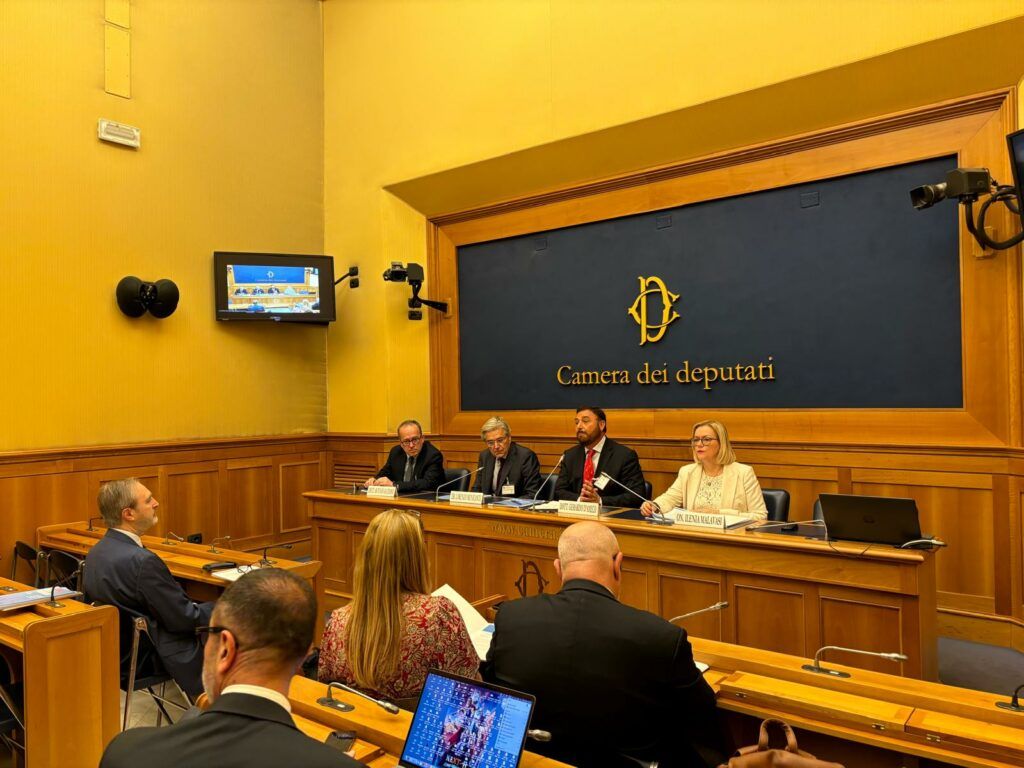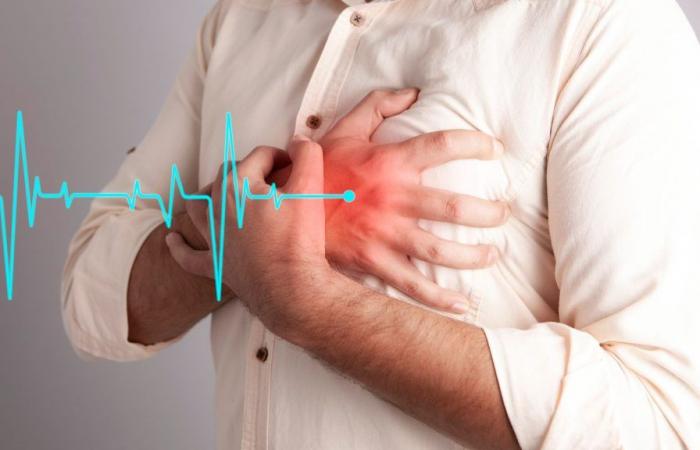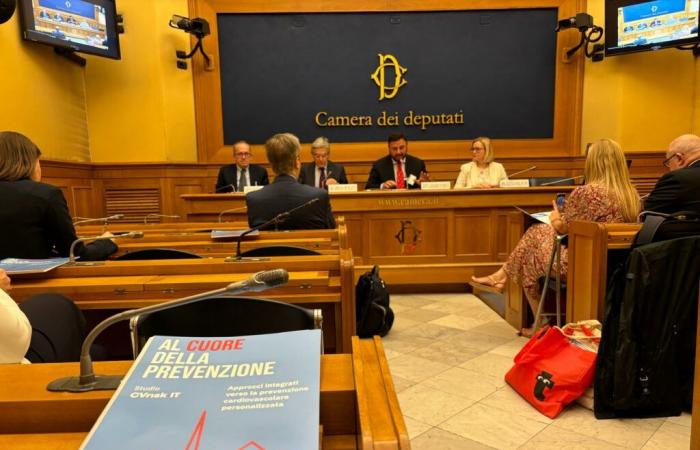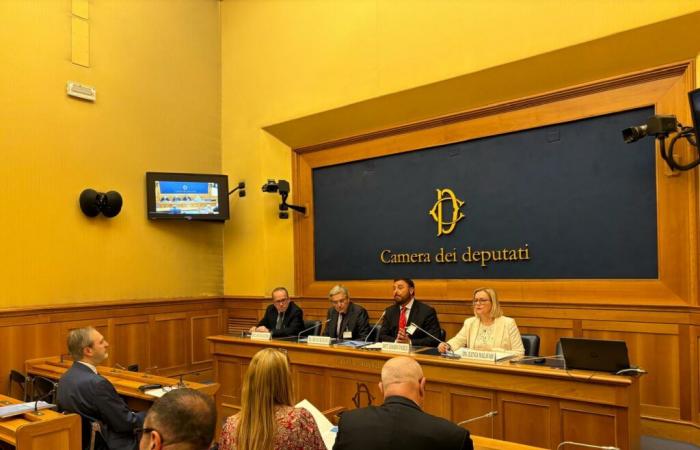But 54% of Italians believe they are not at risk
Published:13-06-2024 14:28
Last update:13-06-2024 14:28
ROME – Cardiovascular diseases represent the leading cause of death both in Italy (30.8%) and in Europe. Despite this, 54% of Italians believe they are not at risk. Even on the continent, cardiovascular diseases account for 32%, followed by oncological diseases (22%). This is what emerged during the press conference ‘At the heart of prevention: advanced strategies to reduce the incidence of cardiovascular diseases and raise awareness among Italian public opinion’hosted today at the Chamber of Deputies and promoted by IRCCS Cardiology Networkwhich includes 20 scientific hospitalization and treatment institutions (retecardiologica.it)
The congress work also highlighted that only one Italian in two claims to do ‘something’ for cardiovascular prevention and only 1 in 10 believes they are doing ‘a lot’, focusing on nutrition (50%), movement and physical activity (39%).
18% carry out regular medical checks and exams and only 11% say they are committed to reducing smoking. There are many obstacles that slow down preventive actions: from changing lifestyle (39%) to poor awareness of the risk (33%), up to lack of information on what to do for prevention (27%) and poor communication/support from the doctor (21%).


Certainly not everyone is at risk in the same way: the percentage increases in those who ignore preventive medical prescriptions, perhaps due to a incorrect perception of danger. A cognitive bias that has direct repercussions both on the health of citizens and on the National Health Serviceso long as Cardiocirculatory diseases are the main source of healthcare spending.
One strategy that can be adopted to reverse this trend is to introduce innovative protocols capable of better identifying the subjects most at risk, proposing targeted preventive interventions. To be able to do this, however, personalized primary prevention plans are needed: greater precision, in fact, corresponds to equal effectiveness.
Aware of this urgency, Parliament approved an amendment to the 2023 Budget Law (concerning the financing by the Ministry of Health of 20 million euros for the four-year period 2023-2026, for the purposes of implementing the project line, envisaged in the scope of the Pnrr ‘Enhancement and strengthening of biomedical research in the NHS’, Mission 6, Component 2, Investment 2.1.), financing ‘At the heart of prevention – Integrated approaches for personalized precision cardiovascular prevention: the Cvrisk-It study’, the most important initiative promoted on the topic of heart disease in our country.
The main objective of the project, illustrated this morning during the press event, is to evaluate the effectiveness of a modification to the prevention evaluation paradigm adopted up to now. Current algorithmic forecasting models are based, in fact, on individual factors: age, sex, smoking habits, blood pressure and cholesterol levels. A gray area escapes these precious predictive indicators in which the risk of cardiovascular disease, although present, is not yet high. Clinical guidelines recommend considering additional assessment elements called ‘risk modifiers’, although the actual benefit of their ‘entry’ into assessment practice is not yet supported by definitive information.
The Cardiology Network project will provide answers to the missing questions by introducing three risk modifiers into the trial: the hereditary component, assessed through the so-called ‘polygenic risk scores’, the presence and quantity of coronary calcium, identified via CT angiography without contrast, and analysis of the carotid artery, using Doppler ultrasound, to detect any signs of subclinical organ damage.
According to the Cvrisk-It researchers, knowing more about these additional modifying factors should allow us to intervene with greater personalisation, to determine better adherence to prescriptions, to modify lifestyle and to activate specific treatments.
The intervention study, randomized, controlled and divided into two phases, has unique characteristics also from a dimensional point of view: thanks to the contribution of institutions, primary care centers, government agencies and voluntary organizations coordinated by the Network, after the authorization step to the Ethics Committees of the IRCCS (Hub) and the other structures involved, mainly hospitals (Spoke), the recruitment of 30 thousand healthy individuals between the ages of 40 and 80, with no history of cardiovascular disease (CVD) or type 2 diabetes.
This first sample will be subjected to 12-month evaluations based on the most advanced cardiovascular risk prediction models. Subjects diagnosed as ‘very high’ risk will be subjected to the treatment recommended by the guidelines.
The others, however, with ‘low to moderate’ or ‘high’ risk, will be randomly introduced to the three new methodological approaches. Afterwards, they will receive specific information and personalized advice on how to lead a healthy lifestyle, based on their estimated cardiovascular risk profile.
The results of the trial will offer healthcare workers and health policy makers the tools for better identification of cardiovascular diseases, for increasing the effectiveness of prevention levels and for formulating increasingly adequate management protocols.
Among the other project targets, first of all that of developing an innovative and repeatable model of interaction with the enlisted people. Furthermore, Cvrisk-It, the database and the ‘widespread’ biobank of the Cardiology Network, enriched by the numerous data coming from the study, will be useful for future investigations on health determinants and on the mechanisms underlying the chronic diseases in the Italian population.
Finally, so that awareness of cardiovascular risk can increase significantly compared to that worrying 54%, a communication and dissemination strategy will be proposed, aimed at multiple targets: the universe of potentially eligible and recruited subjects, external doctors and healthcare workers, as well as the actors of the cardiovascular ecosystem, institutions and public opinion. The hope is a direct impact on healthcare practices with the consequent improvement of the lives of many.
‘Primary prevention is one of the priorities of the Ministry of Health, because thanks to the ability to intercept the disease before it becomes known, it is possible to guarantee better health for the citizen and at the same time ensure the necessary sustainability of the National Health Service. The initiative presented today – he said the Undersecretary of Health, Marcello Gemmatoin a message sent to the participants – is an excellent example of innovation, online sharing of data throughout the national territory and therefore a virtuous example of a new approach to the early management of chronic diseases’.
‘The latter, also due to the progressive aging of the population, constitute an area of intervention on which we are called to act proactively and promptly, promoting broad knowledge of the risk factors and awareness of the most appropriate behaviors to avoid them. In this sense – added the government representative – the Ministry of Health reiterates its commitment to supporting research and health education‘.
‘It’s about it,’ he explained the president of the Cardiovascular Network of the Italian IRCCS and scientific director of the San Donato Polyclinic Institute in Milan, Lorenzo Menicanti– of an ambitious project, which involves an innovative form of informed consent, with a very high number of participants and complete national diffusion. The Cardiology Network will be the actor and main interpreter of the studywith the active participation of 17 IRCCS, and it is the first time that such a large number of Institutes work together to produce such an important scientific infrastructure for improving cardiovascular prevention‘.
‘We are very satisfied to have developed and completed the plan – specified the heart surgeon – and we have the firm hope of being able to achieve the objectives, which are absolutely not to be taken for granted. We expect that Cvrisk-It will be able to substantially improve cardiovascular prevention and contribute to making the population even more aware of the importance of actively protecting their health.’
‘The Cvrisk-It study was strongly supported by Parliament – the words of Ilenia Malavasi, member of the XII Social Affairs Commission of the Chamber of Deputies– because we are certain that it will make an important contribution to the development of increasingly effective strategies for the prevention and management of cardiovascular diseases in Italy. For the first time, in fact, all the IRCCS of the Cardiology Network will work to develop integrated, more precise and personalized primary prevention strategies. I would like to remind you that in Italy, as in most Western countries, cardiovascular diseases today represent the leading cause of death or disability in the adult population, but, thanks to therapeutic innovation and prevention, a significant number of deaths could be avoided‘.
‘It is therefore evident – the representative of the Democratic Party then said – the urgency of launching every useful initiative to put prevention at the center as an investment in the well-being of citizens, starting from the definition of a screeningwhich is fundamental for this purpose.
‘The role of citizens, in particular patient organizations and citizens, is essential,’ he concluded the director of Edra, Antonio Gaudioso– and it is both to build scientific projects, to discuss the objectives, to develop them as best as possible, to help write the informed consent. But working together on scientific projects also helps spread awareness in the community about centrality of the role of scientific research for our future‘.
The news on the Dire website can be used and reproduced, provided that the source Agenzia DIRE and the address www.dire.it are expressly cited









